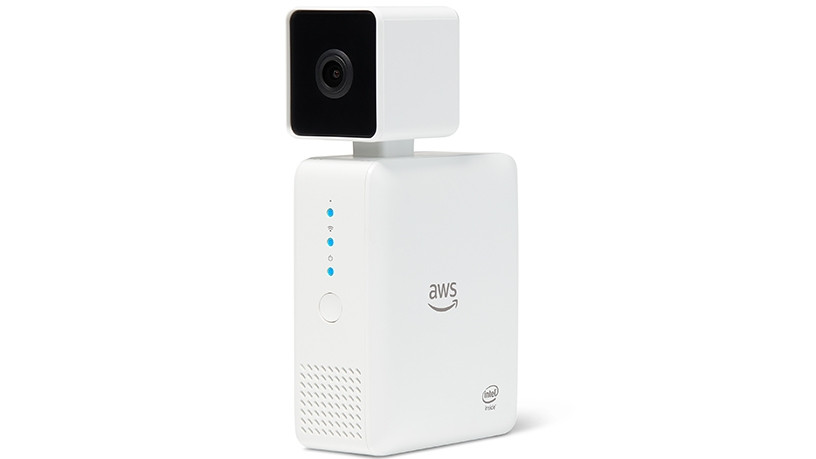
Machine learning was a major focus at this year's Amazon Web Services (AWS) re:Invent Conference in Las Vegas, with a slew of announcements related to the field made by AWS CEO Andy Jassy in his keynote address.
"If you want to enable most enterprises or companies to be able to use machine learning in an expansive way, we have to solve the problem of making it accessible for everyday developers and scientists. When you are trying to build a machine learning model, it's not easy, there are blockers every step of the way," Jassy said.
A year ago, the AWS boss announced a number of artificial intelligence (AI)-related services and this year the trend continued, with Jassy announcing new machine learning services as well as what AWS says is the world's first deep learning-enabled video camera for developers.
"Machine learning is so tantalising for most everyday developers and scientists; the hype and the hope are tremendous. You can argue that of all of the buzz words that we have heard in the 11-and-a-half years that we have been doing AWS, that machine learning might be the loudest, and it's absolutely the buzz word du jour today.
"But developers don't want machine learning to be so difficult. There are still a lot of constraints for builders and we know this because we have been doing machine learning in a really serious way at Amazon for 20 years. And if you look at most of the things you see in our consumer business, it's fuelled by machine learning," he added.
Out of the 22 new services unveiled during Jassy's keynote speech, six relate to machine learning, the main one being Amazon SageMaker, which is a managed service for developers and data scientists to quickly build, train, deploy and manage their own machine learning models.
Swami Sivasubramanian, VP of machine learning at AWS, said Amazon SageMaker "removes a lot of the muck and complexity involved in machine learning" to allow developers to more easily deploy models.
"Our original vision for AWS was to enable any individual in his or her dorm room or garage to have access to the same technology, tools, scale and cost structure as the largest companies in the world. Our vision for machine learning is no different," said Sivasubramanian.
The group also unveiled four application services that allow developers to build applications that emulate human-like cognition: Amazon Transcribe for converting speech to text; Amazon Translate for translating text between languages; Amazon Comprehend for understanding natural language; and Amazon Rekognition Video, a computer vision service for analysing videos in batches and in real-time.
Jassy said Amazon Transcribe so far can detect both English and Spanish, and more languages will be added in the coming weeks and months.
AWS also introduced AWS DeepLens, a deep learning-enabled wireless video camera that can run real-time computer vision models to give developers hands-on experience with machine learning.

What people want
"At AWS, over 90% of the features and services we create come directly from customer feedback, so the focus on machine learning comes largely from the fact that our customers are doing a lot of machine learning and want to do more machine learning," Adam Fitzgerald, head of worldwide developer marketing at AWS, told ITWeb in an interview on the side-lines of the event.
"We don't build technology just because we think the technology is cool. A lot of innovation has come from AWS but it's never because we think the technology is cool. The only reason we build that technology is to solve problems for our customers," Jassy reiterated.
He said the pace of innovation is continuing to expand.
"Last year, we launched over 1 000 significant services or features; we anticipate that this year that will be over 1 300."
"SageMaker was created to lower that barrier to entry for machine learning and automate a lot of what they call 'data munging processes' that are necessary in order to build effective and accurate machine learning models," Fitzgerald added.
"Overall, as an industry trend, the reason machine learning is hot comes down to two factors. The first is that data is the food on which machine learning survives. So the cloud has produced opportunities for people to store more and more data about their applications, about their business and users, and about their customers ? so this has driven an appetite to get business learnings from that data," Fitzgerald said.
He explained that the other factor was the cost.
"The cost of computing power was previously a barrier to entry and you needed a lot of horsepower in order to crunch the numbers and do all of the model analysis. It's now cheaper than it's ever been to run heavy compute workloads in the cloud, so if you take those two factors together then it makes sense for businesses to really be interested in machine learning."
Share